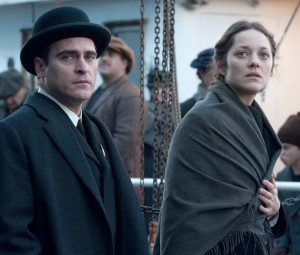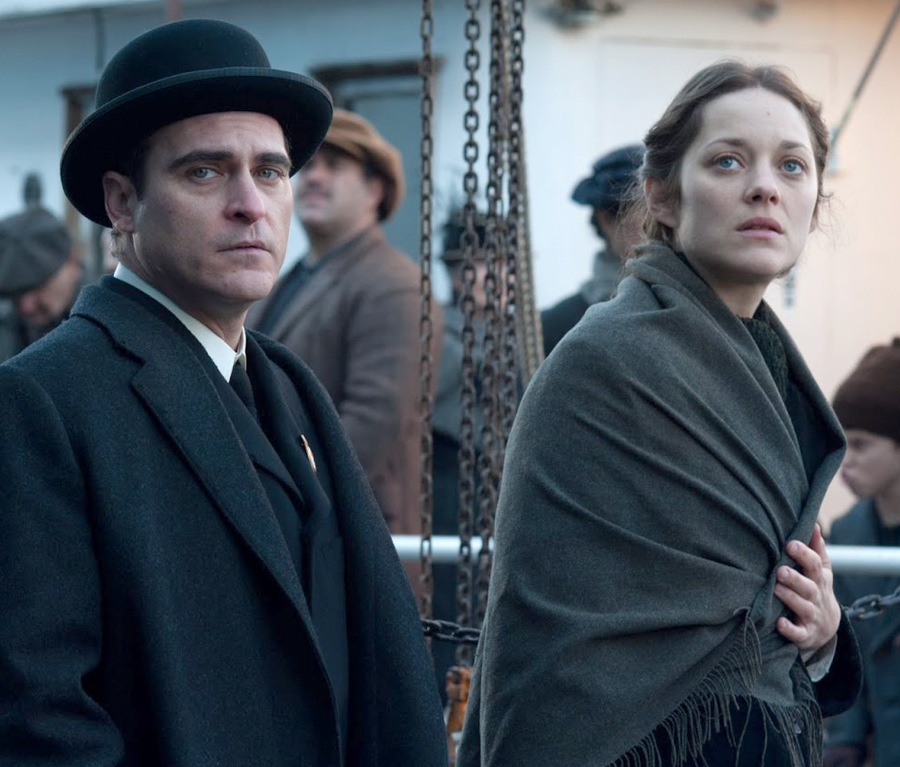James Gray brings latest film to campus
Written and directed by James Gray, The Immigrant might not be in theaters until May 16, but if you were in Professor Leonard Maltin’s Film Symposium class Thursday night, you got to see an advanced screening. Following the sneak preview of the film, the passionate, animated and comedic School of Cinematic Arts alumnus James Gray stopped by for a Q&A session with Maltin’s students.
Gray spoke candidly about a range of topics during the discussion, including stories from the set of his latest film, his preference for shooting on film over digital formats and his distaste for postmodern irony in the arts. The director even had time to squeeze in a couple of impersonations. His near-perfect Jimmy Stewart impression and his hilarious rendition of Marion Cotillard rehearsing in Polish for The Immigrant had everyone chuckling in their seats.
Before the Q&A session, Gray also sat down for a quick interview with the Daily Trojan where he remembered his days as a film student devouring film theory and foreign films.
“I found all of that theory criticism to be incredibly liberating … It’s an old cliché, but knowledge is power,” Gray said.
Originally from Queens, N.Y., Gray chose USC over notable film schools on the East Coast such as Columbia University and New York University.
A double major in film production and critical studies, Gray exhibits an immense knowledge and respect for film. During the interview, Gray spoke fondly about masterpieces such as Federico Fellini’s La Strada and also expressed a passion for opera. In fact, opera, along with his own family history, inspired the story for The Immigrant.
Before discussing his film, Gray took a moment to reflect on his time as a student at SCA where he would raise his hand to every question posed by Professor Drew Casper, immerse himself in Michael Renov’s lectures and marvel at the world of film theory exposed to him by Marsha Kinder. He recalls one instance where he corrected Professor Casper after he mixed up the title of a Martin Scorsese film. After Gray corrected the professor, Casper said, “‘Thank you James,’ but really what he meant was I was a jerk,” Gray said. “I think I drove him crazy in that big class, 190 … I was a know-it-all.”
When asked about the USC network during the interview, Gray disclosed, “Not only do I have it — I see the same group of friends from film school every Saturday for lunch for 20 years.”
Clearly a loyal friend and collaborator, The Immigrant brings Gray and Joaquin Phoenix together as an actor-director duo for the fourth time. Regarding their working relationship, Gray said the two of them have extensive conversations about Phoenix’s characters. They even “meet up on weekends before the next week’s shoot” to discuss and rehearse.
With The Immigrant, Gray sets out to tell a very large story — the pursuit of the American Dream — but he manages to do so in an incredibly intimate manner. The story develops with nuance and is complemented by both beautiful cinematography and a delicate score.
The narrative unfolds as a classical fable and centers around a Polish immigrant named Ewa Cybulska, played by Marion Cotillard, and her sister as they enter the United States via Ellis Island. As the sisters anxiously wait in line at immigration, Ewa is separated from her sister, who’s sent to quarantine. Left completely alone, Ewa falls prey to the charming but corrupt Bruno (Joaquin Phoenix). She latches on to him for survival, but it becomes Bruno who needs someone to latch on to, making the film an exploration of a parasitic relationship.
Somewhat of a purist, Gray and the film’s director of photography Darius Khondji shot The Immigrant on actual film stock — a material rarely used in the industry aside from a couple of filmmakers such as Christopher Nolan and Steven Spielberg. Gray’s research involved looking at paintings and autochromes — color photographs from the early 20th century — resulting in a gorgeous gold tint to the images on screen.
Gray’s passion for shooting on film isn’t the only tradition he honors. After a remark during the interview that his films feel somewhat classical in their approach to storytelling, Gray was quick to respond that he aims for sincerity and stays away from the postmodern trend of approaching characters with a sense of irony.
“If I don’t care about the character, why should you?” he said. That compassion for his characters definitely translates to the screen. In The Immigrant, both Ewa and Bruno are written carefully. They’re complex and don’t fit into any specific trope or archetype.
The Immigrant might be Gray’s first period film, but it marks his fifth feature. And though he expressed that he was particularly lucky in the industry, receiving management and an agent right after graduation, he offered words of wisdom to young filmmakers during the interview.
“If you take the time to put your heart and soul into [your work], you’re going to be successful,” he said.
To hopeful writer-directors like himself, Gray stressed the importance of learning structure and character, but most importantly being personal.
“If you can speak from your voice, you will be successful,” Gray said.
Though some might argue Gray is overly optimistic about the odds of working in a notoriously competitive industry, he also noted that it’s not an easy road to success in Hollywood.
“It takes a long time to master the craft,” Gray said. “The batting average isn’t high but that’s OK — it took Hitchcock about 10 films to get it right.”

